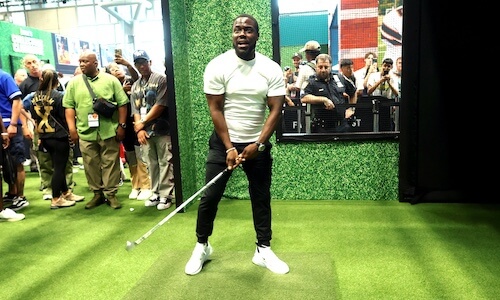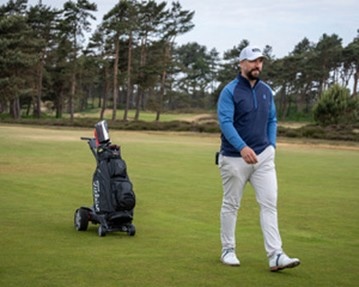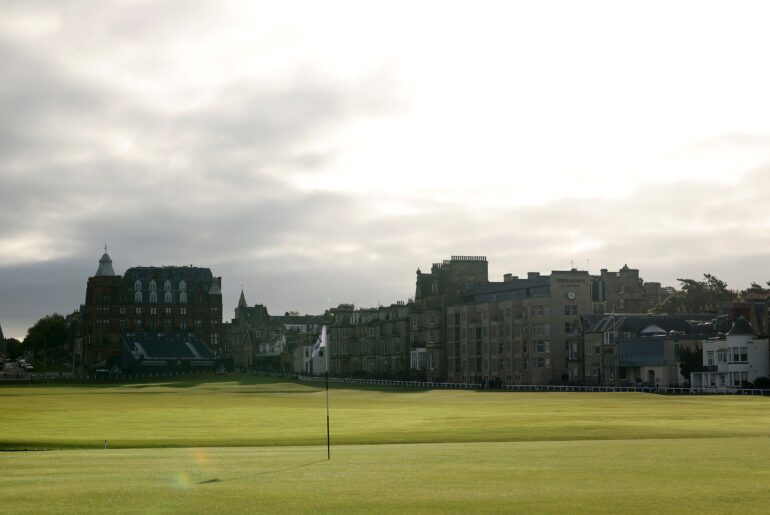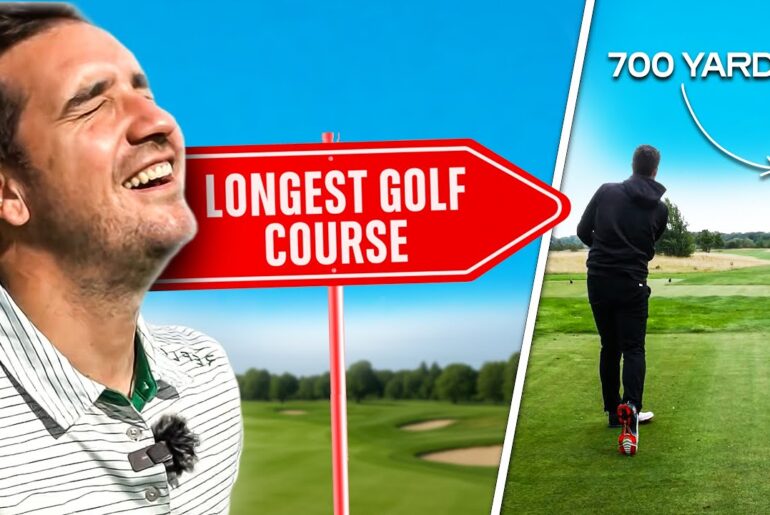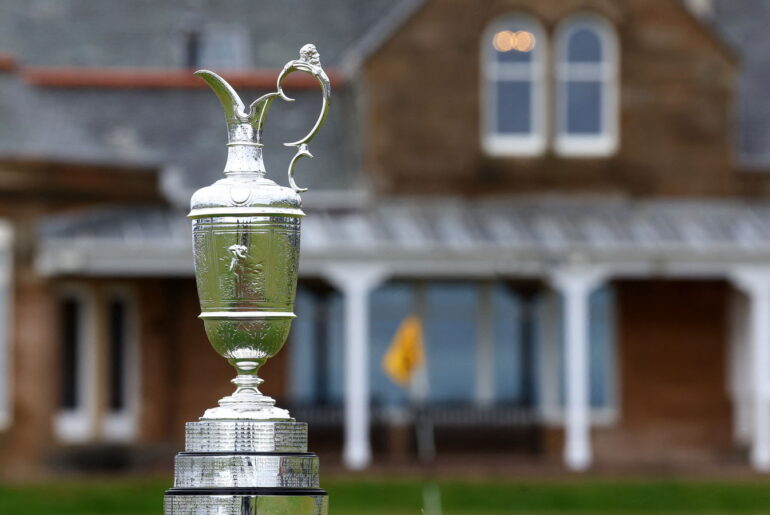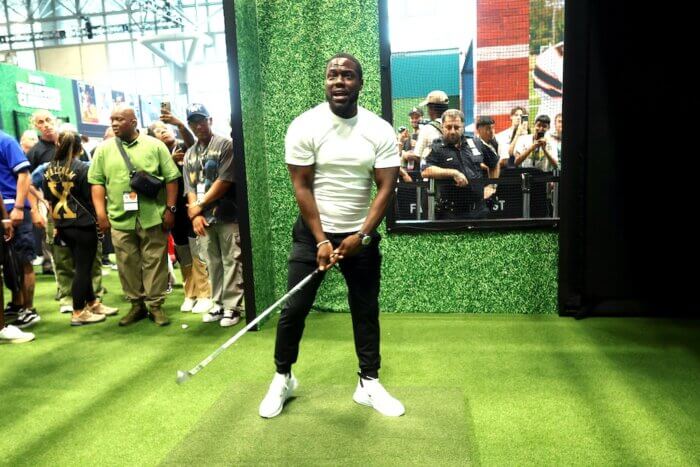 Comedian Kevin Hart is one of many celebrities who are bringing golf to a new audience. Rob Kim, Getty Images for Fanatics
Comedian Kevin Hart is one of many celebrities who are bringing golf to a new audience. Rob Kim, Getty Images for Fanatics
Editor’s note: “In Case You Missed It” is a GGP+ feature that highlights a story from Global Golf Post‘s Monday magazine.
In the same week in which the PGA Tour announced that The Sentry will not be played in 2026 due to serious water issues at Kapalua, thereby delaying the start of next season by one week, it was another announcement that may be more consequential over the long term.
Next fall, Good Good Golf will be the title sponsor of a new PGA Tour event in Austin, Texas, a strategic recognition by both parties of where the sport is and where it’s going.
If you’re not familiar with Good Good Golf, it’s something of a new-age business, bringing together merchandise, media and its own community, resetting where golf exists as it reaches beyond the game’s traditional demographic.
While the tour is still underpinned by billion-dollar corporations willing to put their name on events, adding a title sponsor that has built its brand online speaks to the changing times.
It’s a sport in which, according to the National Golf Foundation, 28 million played golf on a course in 2024 while another 32 million participated in off-course golf. The game has become ingrained in our culture like never before.
There are date nights at Topgolf. Upscale apartment complexes feature golf simulators. Golf-centric clothing brands now have stand-alone stores.

Comedian Kevin Hart is into golf. So is NBA star LeBron James, who recently posted that half of what he sees on his social media feed is golf-related.
When you see photos of tennis legends Roger Federer and Rafael Nadal these days, they’re usually on the golf course. Comedian Nate Bargatze was part of Rory McIlroy’s offseason getaway last year and “Saturday Night Live” star Colin Jost hosted a daily show from the Ryder Cup.
“This moment golf is having feels different. It feels more grassroots and ground up, I hate to say from the consumer perspective, but golf is booming in spite of the pro game which has gone through a lot the last four years,” said Chad Mumm, the executive producer and creator of the Netflix series “Full Swing,” which has brought an inside look at professional golf to a broad audience.
“A lot of it has to do with COVID and things like Topgolf and simulators made it easier for people to try it, to get a club in their hands. Then you see the online community, whether it’s Instagram or TikTok, now YouTube, where people can take an interest in the game and turn it into a real passion point or real fandom.
“On top of that you have all these famous people … celebrities have already played golf but now they’re doing it and posting about it all the time on social media. In a two-year period of time you’ve seen this stigma that golf has carried in the U.S., at least for the past 60 years, really fall away and golf became a thing that is not an elitist sport. It’s something anybody can go do and be passionate about.”
The byproduct of golf’s new profile is change, something that draws pushback in certain corners.
Traditionalists – you know who you are – shudder at the idea of music on the golf course but that’s like trying to hold back the tide. The golf fashion police are alive and well in places, cutting their eyes at cargo shorts and shirttails that aren’t properly tucked in. Some starchy places don’t allow push carts.
Because of all the new people who come into the game, golf does not face a reckoning but a realization that it is bigger and – here’s that word – more diverse than ever. It has made golf better and, like most other things, not everything is for everybody.
But golf has become less intimidating and more inviting.
This is golf’s extended moment. Private clubs have years-long waiting lists. Equipment has never been better. Rory McIlroy, Scottie Scheffler and Tommy Fleetwood radiate star power.
Go spend an afternoon at The Cradle at Pinehurst, the short course where shoes are optional, there’s music in the air and Transfusions are being poured, and there’s no better example of how golf is changing.
Go scrolling online and explore golf’s expanding universe.
Bryson DeChambeau has built an empire on YouTube by being his quirky self. Content creators, a species that didn’t exist a few years ago, are familiar enough to the new generation of golfers that they play their own events, and spread them across various viewing platforms.
According to AI, there were more than 4.3 billion views of golf content on YouTube in a recent 90-day period. Little wonder that Good Good Golf has grown from a group of twentysomethings posting videos online into a big enough brand to be a PGA Tour title sponsor next year.
Remember when the Masters only showed the final holes on Saturday and Sunday afternoon? Now the Masters can be an immersive online experience, seeing not barriers but broader horizons.
Not unlike what’s happened to the written word – podcasts and videos have shouldered into the media space but there is still room for readers – the game is more accommodating now.
This is golf’s extended moment. Private clubs have years-long waiting lists. Equipment has never been better. Rory McIlroy, Scottie Scheffler and Tommy Fleetwood radiate star power.
The PGA Tour is in the midst of being reimagined and there is plenty of conjecture about what it will look like in, say, three years. The guess is similar but different.
Remember what Brian Rolapp, the tour’s new CEO, said in August:
“We’re going to honor tradition, but we will not be overly bound by it.”
That’s going where the game is going.
© 2025 Global Golf Post LLC

